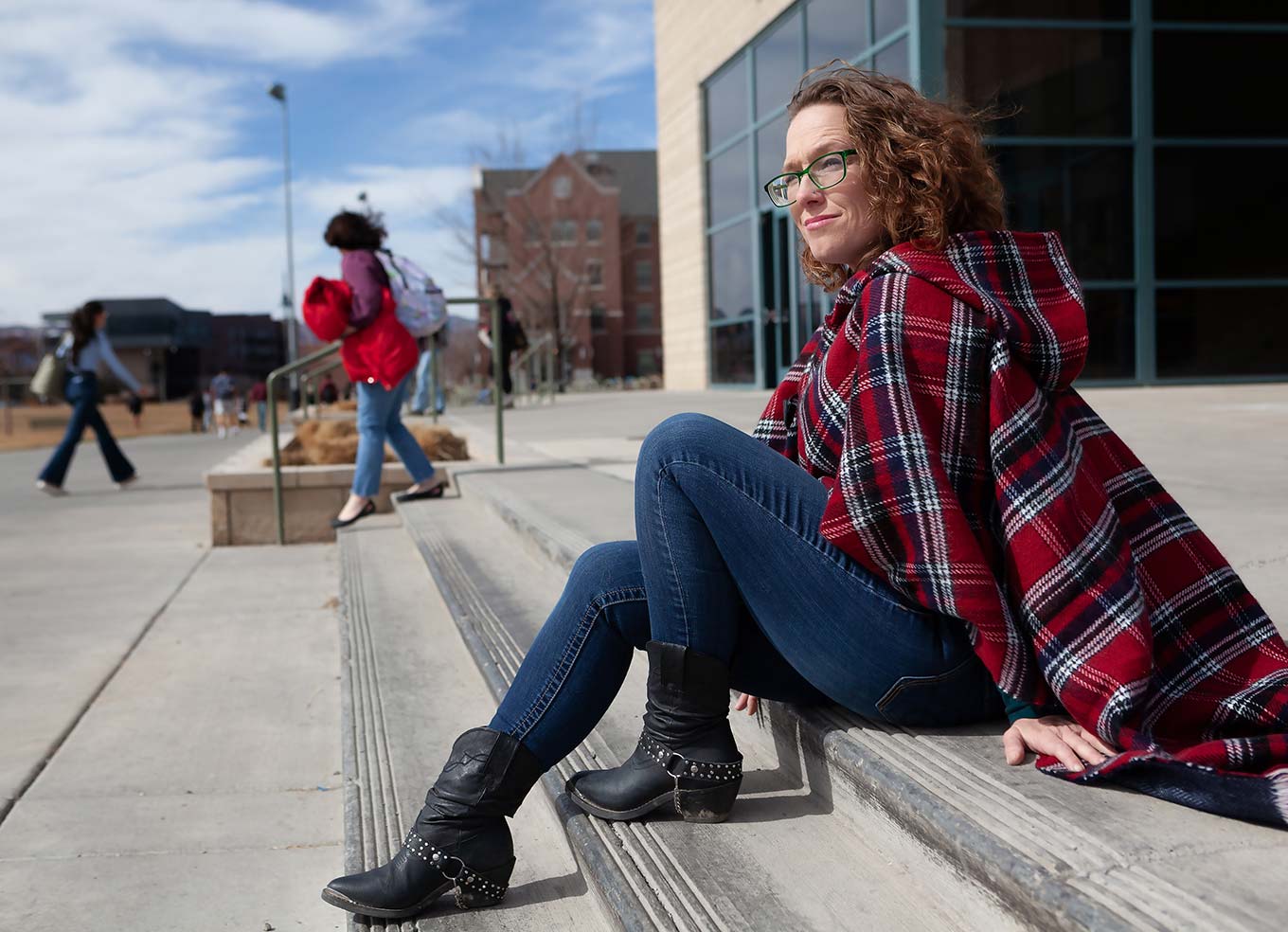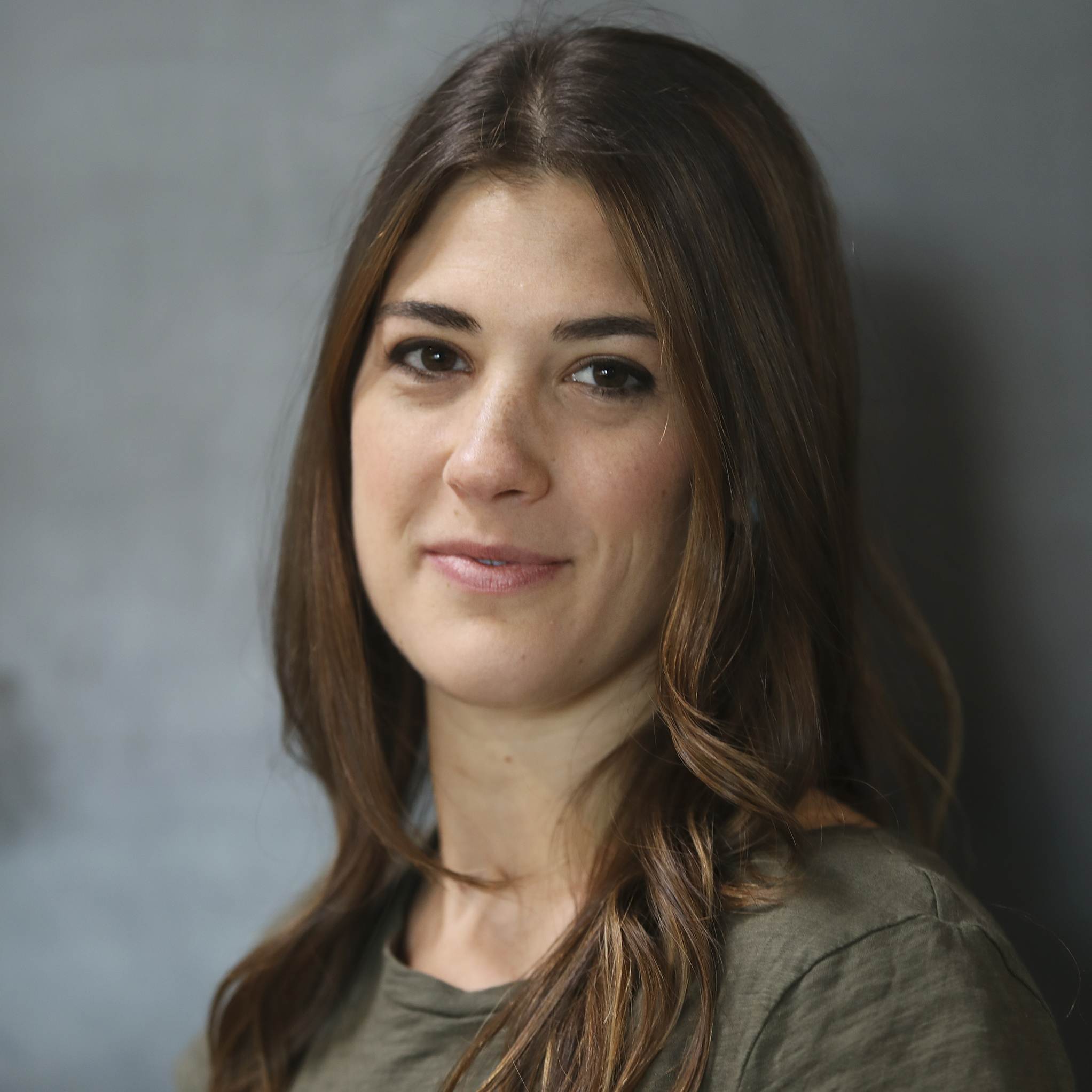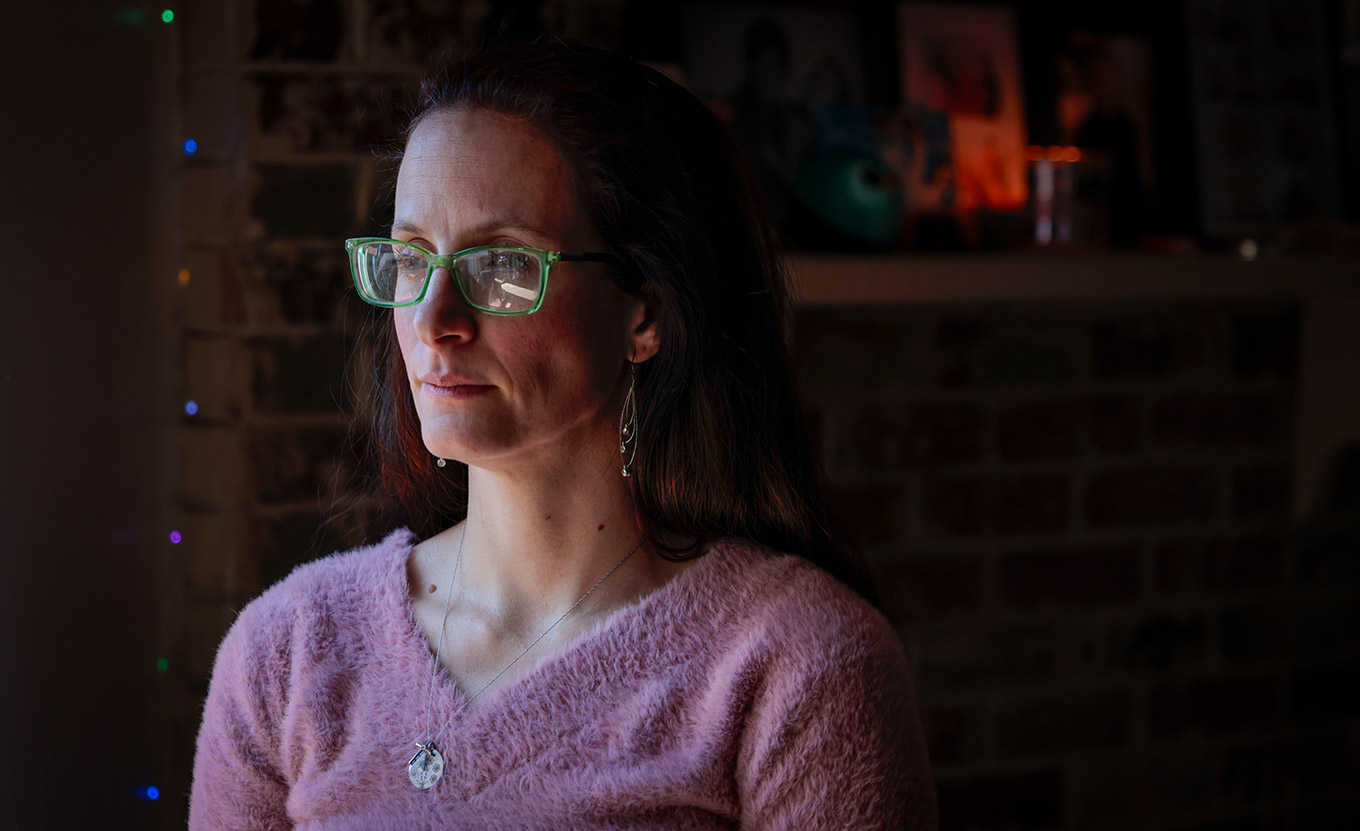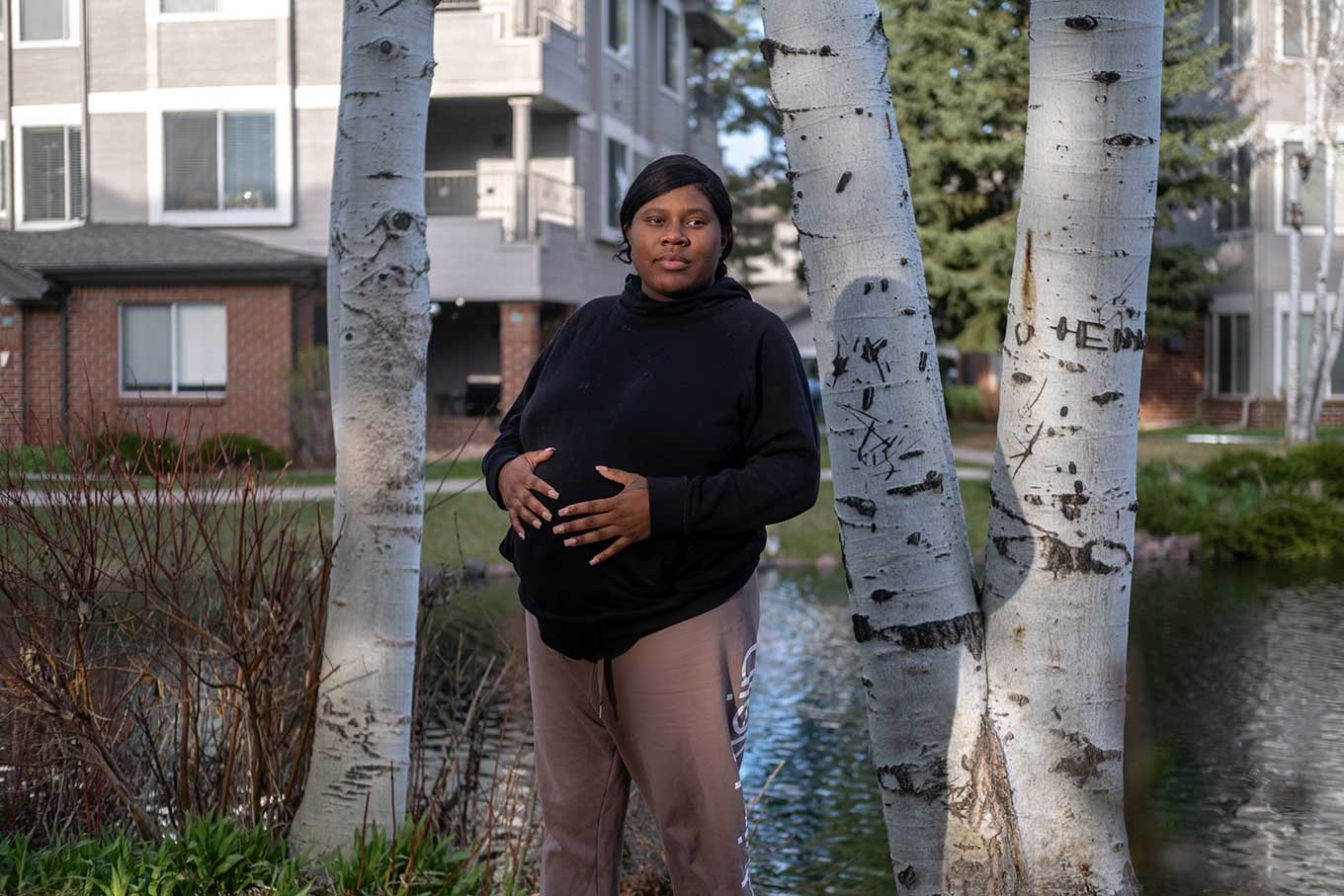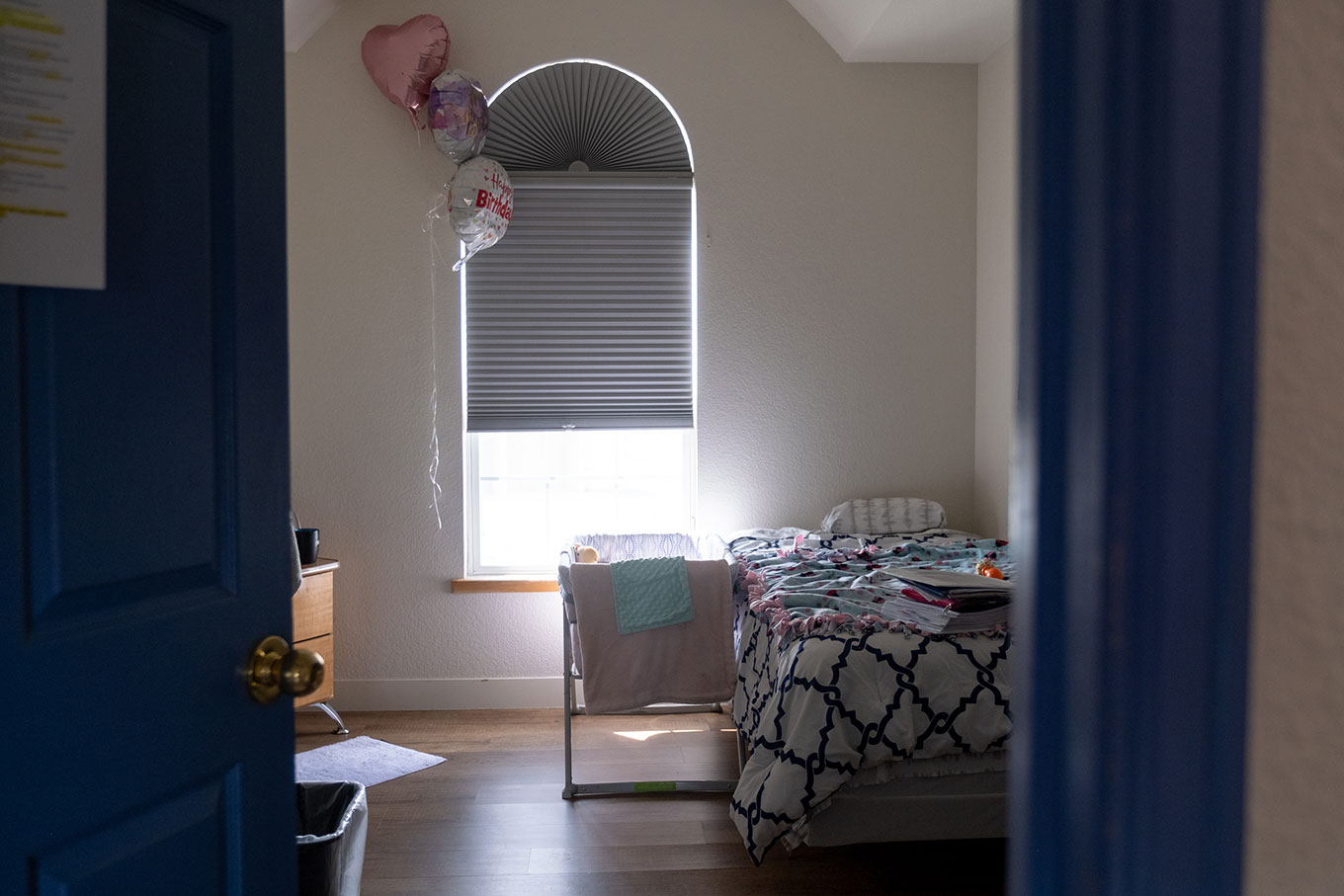Natasha Fox was nine years old when she entered the foster care system. She recalls being emotionally, mentally and physically abused by her mother as early as kindergarten. She used to show up at her Michigan elementary school hungry and bruised. Three years later, when her birth father was finally located, he moved her in with his family in Colorado.
It was “culture shock,” Fox says. “They didn’t realize how much I’d gone through, and I immediately started acting out.”
Six months later, Fox was placed in foster care. She moved between 20 or so different placements—foster homes, residential treatment centers, group homes—until she turned 18 years old, the age at which one generally ages out of the child welfare system.
Fox was a good student and knew she wanted to continue her education, but her path wasn’t clear. By the time she was in high school, she had had numerous encounters with law enforcement, primarily for attacking staff members when they tried to restrain her during angry outbursts. One such incident landed her in front of a judge who told her she had one more chance to get her act together or she’d be sent to a youth detention center for two years.
That judge’s declaration was the motivation she needed to refocus on school. She managed to graduate and get into college. But Fox gave birth to her first child shortly after leaving the system, and her education fell to the backburner. Now 37 years old and living in Grand Junction, her three kids are all teenagers, and she’s finally achieving her initial goal: In December, she’ll graduate with a bachelor’s degree in sociology from Colorado Mesa University (she already has an associate’s degree).
“You go from having a home and everything to zero, to nothing,” she says of leaving foster care. “There was some domestic violence. We’ve really fought a lot of poverty. We’ve been homeless… not being just another statistic is a pretty big deal.”
****
In Colorado, around 200 young adults age out of foster care annually. (Approximately 5,100 are part of the system each year.) Many struggle during that inflection point: By age 19, 29% have been incarcerated and 28% have experienced homelessness in the previous two years, according to the National Youth in Transition Database—numbers that are significantly worse than the national rates.
Only 30% of Colorado foster kids graduated from high school in 2022, and around 61% of aged-out 19-year-olds in the state have earned a high school diploma or equivalent. By comparison, students experiencing homelessness graduated at a rate of 55.4%, while the statewide graduation rate stands at 82.3%.
These adverse outcomes cost taxpayers between $309,614 and $343,453 per youth, according to a recent report on the economic costs of foster youth by the Common Sense Institute, a nonpartisan research group.
“We are taking care of this population of young people—we’re doing it on the back end, through courts, through juvenile justice, through opportunity costs that we’ll never realize,” says John Farnam, 2023 Morgridge Child Welfare Fellow and one of the report’s authors.
Recognition has grown in recent years that expanding access to services beyond foster kids’ 18th birthdays—the day they age out of the system—could help reverse some of these outcomes. While many young adults feel ready for independence when they reach that milestone, that doesn’t mean they’re equipped for self-sufficiency. That’s true for any teenager, but particularly for foster youth whose lives have often lacked stability.
“There’s a sense of safety that families provide to young people that by virtue of being involved with the child welfare system, most of our young people don’t really have,” says Trevor Williams, youth services unit manager at the Colorado Department of Human Services.
While Colorado does not boot people from services when they turn 18—Williams says state-funded supports are available until they turn 21—it’s still a tough transition.
“I have foster brothers I know right now who are in and out of jail or homeless shelters or crashing at people’s places,” says Shaun Hall, who was in foster care in Indiana from age 15 to 18 and is now involved with the nonprofit All In Fostering Futures, which supports foster alumni. “How does this happen? All these kids are getting out every single year, and they basically have nothing… that’s the biggest thing about leaving foster care is that we now have nobody.”
Hall and Fox are part of a growing group of foster alumni joining advocates, welfare agencies and government officials to develop more programs and resources that support youth as they transition beyond the system—help that wasn’t as readily available when they stood on adulthood’s doorstep.
****
Dezmond Crawford knows life with and without a biological family. He was placed in foster care at 12 years old and moved between three group homes in the Denver metro area. He recalls them as “chaotic,” a reality that caused him to run away multiple times.
“Going there at 12, having a taste of living with your family, it was tough for me to adjust,” says Crawford, now 29. “After a few months, I would grow tired of not having the resources I needed or the support I needed, and I would just take off.”
At his final group home, he found a support system that he still relies on today. The person in charge helped him prepare for post-foster care next steps and enroll at the Community College of Denver.
Like Fox, it took Crawford a few attempts to get his footing. He slept on couches and in his car for periods.
“Thinking about that time to now, it was a roller coaster of not knowing what I’m doing—doing my best and falling on my face over and over again,” he says. “Not knowing how to manage my time as an adult. How to organize as an adult. How to manage my money as an adult. How to deal with stuff the right way.”
Crawford finally graduated this past summer and has a stable job at a Denver tech company. One of the keys to that accomplishment was Bridging the Gap.
The program, run by Mile High United Way, provides wraparound services to 18- to 24-year-olds transitioning out of the child welfare system (though they can sometimes access services for longer). Crawford first connected with the group when he was 21 years old. He says the team has been his “whole support system,” helping him finance his schooling and find housing, even paying for one of his security deposits.
“These are the kids who once their time in the child welfare system ends, they have nothing,” says Roweena Naidoo, who oversees Bridging the Gap and works as the United Way’s vice president for policy and community initiatives.
The program’s initial focus is finding secure, stable housing for youth since many face homelessness (participants are referred to Bridging the Gap via OneHome, Denver’s coordinated entry system for housing). Then, they’re paired with coaches who teach life skills (like how to keep their apartments clean) and support efforts to reach self-sufficiency goals, from education to food security to career needs, and connect them with mental health supports. The program continues to offer direct support—and future preparation—as long as the participants’ housing vouchers last, but coaches are still available to alums.
“Our program is a nice training ground,” Naidoo says. “Even for kids who had a stable home with their parents… they’re not all prepared for what it takes when you leave home, but they do have hopefully a parent they can go to and have as their trusted adult. We’ve become that for our young people.”
The state has also stepped in to provide additional support and extend services in recent years. In 2023, other housing vouchers were available to foster youth until age 26. In 2022, Colorado created the FosterEd program. It covers the total cost of higher education (including books and living expenses) for Coloradans in the foster system at or after age 13; it has no upper age limit. And in 2021, Colorado created a voluntary foster youth-transition program that extends eligibility for some child welfare services, including housing, to age 21 and allows young adults to leave and return if they realize they need additional supports.
Williams called it “an enormous paradigm shift.”
“We’re maybe moving that needle in the right direction,” he says, “and creating a better experience for young people.”
Nationally, there has been a recent push to prevent kids from ending up in foster care, with 9% fewer youth in such systems between 2021 and 2023. The federal Family First Prevention Services Act, passed in 2018, provided additional funding for preventative services, such as in-home parent skill development programs, kinship navigator services and mental health and substance abuse prevention and treatment services.
Locally, a proposal for a foster youth “bill of rights” is pending in the state legislature. Meanwhile, Williams’ team is evaluating a new model called Pathways to Success that is based on “coach-like engagement” to help young adults develop independent living and self-advocacy skills.
Not all of these efforts are new. The federal government created the Family Unification Program in 1990 to provide housing vouchers to families at risk of losing a child to out-of-home care, and to 18- to 24-year-olds who are aging or have aged out of foster care and are homeless or at risk of becoming homeless. More than 26,000 of these were issued nationally last year. In December, the U.S. Department of Housing and Urban Development (HUD) announced an extra $10 million for the program, including $862,761 and 52 additional vouchers for the City and County of Denver. (Mile High United Way’s Bridging the Gap is one of the programs that helps administer these and other vouchers in the Denver metro region.)
A much newer sister program—Foster Youth to Independence—provides housing assistance solely to youth who have left foster care (or will soon), are 18-24 years old and are homeless or at risk of becoming homeless. The vouchers are time-limited for three years, with a potential two-year extension.
“Like a lot of federal housing programs, we have more applications than we have funding for,” says Richard Monocchio, principal deputy assistant secretary in the Office of Public and Indian Housing at HUD. “One in five people, households, families who qualify income-wise for housing actually receive it.”
Rising rents have made the program more expensive, but the Biden administration added 100,000 vouchers to the Housing Choice Voucher pool—the first expansion in two decades, Monocchio says. The secretary is also convening several meetings between HUD, the Department of Health & Human Services, housing authorities and child welfare agencies across the country to improve the uptake of these programs and expand their reach to help with education, training and employment.
“This is a particularly vulnerable group of people that we’re trying to help here,” Monocchio says. “We need to bring all that the government and all that the nonprofit world has to bear on this problem.”
The federal John H. Chafee Foster Care Program for Successful Transition to Adulthood—which funds child welfare agencies to support young adults as they move beyond the foster care system—was created in 1999. The initiative serves 54 Colorado counties and tribes. It’s a voluntary program and accessible until young adults’ 23rd birthdays.
What the state has done with all of these efforts, Williams says, is “taken what was effectively a very steep cliff for the vast majority of our young people, at about 18.5 [years old] and rolled that off so that it’s a continuum of support until they’re 26 if they need it.”
Crawford faced that cliff. He accessed Chafee program help for 18 months and then had more than a year when he was entirely on his own.
Kids in traditional families “were able to fail and still have a backup place to go or backup home or still support once they failed,” Crawford says. “When you’re a foster kid, every decision you make feels like it has to be your best decision, or you could end up homeless or in really bad situations.”
Eight years after connecting with Bridging the Gap, and now with two kids of his own, Crawford is finally transitioning beyond the program. He’s nervous but feels set up to succeed like he wasn’t when he left foster care a decade ago.
“I feel extremely humbled by the things that I’ve been able to do and where I’m at now,” he says. “I really feel like I owe Bridging the Gap a lot of the credit because they’ve been a constant support… I feel like I’m really ready to continue to achieve great things and do really well.”
****
On a cold morning in early December, a meeting room inside Walnut Creek Golf Preserve in Westminster is buzzing. Tables have been pushed together into a U shape, and about 20 people gab over a breakfast of scrambled eggs and potatoes until Lynn Johnson steps into the middle of the room.
The former assistant secretary for HHS’ Administration for Children and Families founded All In Fostering Futures in 2021. More than 113,000 foster youth across the country are awaiting adoption, and the organization is working to develop a supportive community for those who’ve transitioned out of the system.
A group of All In members traveled to Washington, D.C. to share their experiences and push to remove age caps for services, among other needs. At this meeting in Westminster, they’re trying to envision how to move that work forward.
Natasha Fox sits toward the center of the room. Speaking with her today, she has an easy smile and a welcoming demeanor. The angry child she says she was feels far away.
“I never got good coping skills. I never really learned how to take care of myself or how to calm down,” she says. Those are the competencies she wants to make sure other foster youth learn. In conjunction with the Grand Junction-based nonprofit Foster Alumni Mentors (FAM), Fox developed Level Up, an eight-week program for high school students age 15 and older who are still in foster care so they can learn about self-care, self-advocacy, goal setting, healthy relationships and more.
When Fox aged out, she was told she was too old for one support program after another. FAM serves anyone 16 or older who has been in foster care. The nonprofit was started by Kimberly Raff, who aged out of foster care herself in 1995. In 2015, when she was working in child welfare, Raff realized kids were still aging out with similar resources to what she’d had access to 20 years earlier. She started sharing her own story—which included a substance-addicted mother and an abusive stepfather and being the first in her family to graduate from college—and found that it was having an impact on her clients.
“I was doing a disservice to kids in the foster care system by not sharing my story,” Raff says. “We talk about science and how the brain is fully developed by the age of 25. A lot of these programs go up to the age of 24. Well, that’s typically when kids from foster care are like, ‘Oh crap, I need to get my life together and I don’t know how to do that,’ but by that time all of these services are gone.”
She launched FAM in 2017 to build community among foster alums (ages 16 and up) through monthly hangouts, financial and housing services, and groups like Fox’s.
“I’d never met another somebody who was in foster care who was successful, who wasn’t a statistic,” Fox says. “[Foster youth] need that mentor piece… All In and FAM are two great organizations coming alongside and saying, just because you’re turning 18 doesn’t mean you’re on your own.”
